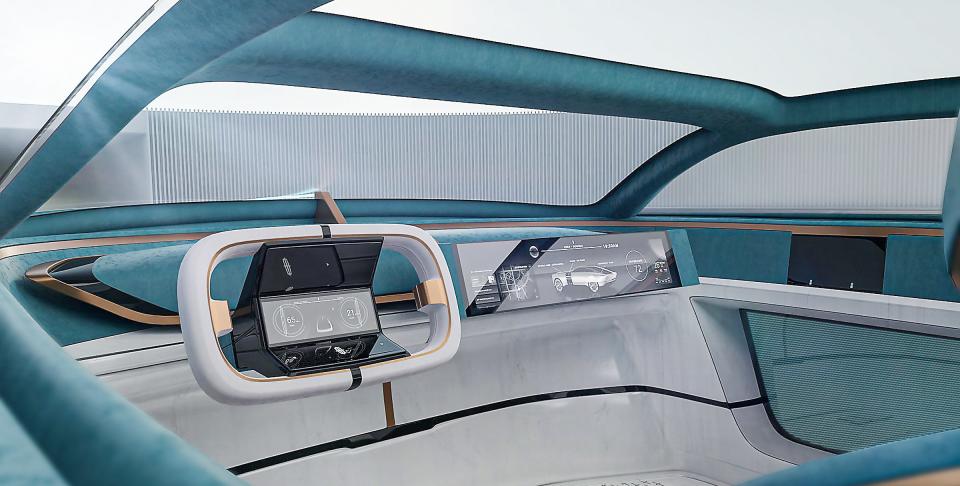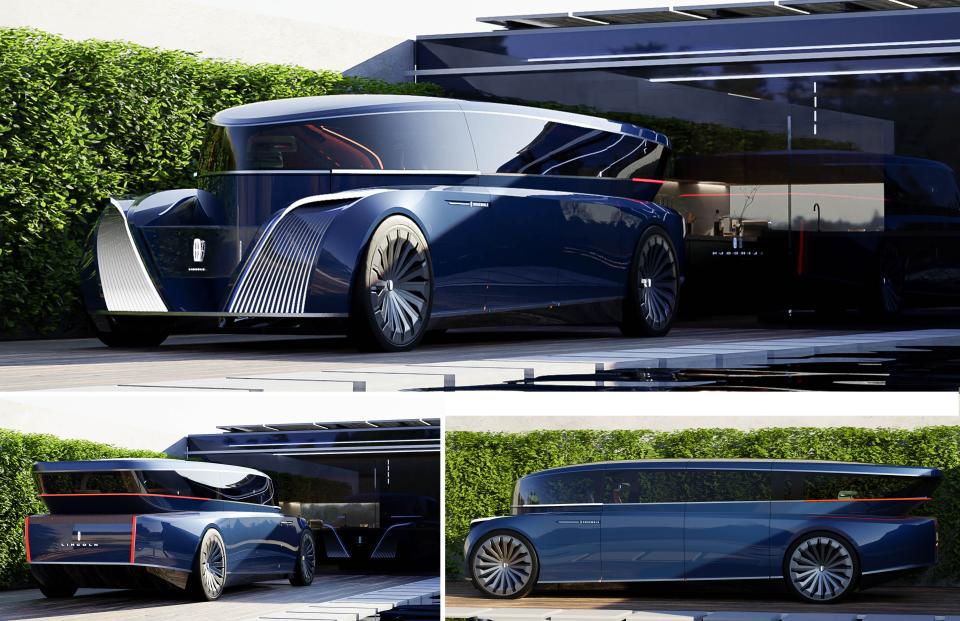In 2040, You May Drive a Car That Looks Like This
The Lincoln Motor Company recently revealed a quartet of concept cars aimed at depicting the types of vehicles the automaker might potentially produce in 2040, and the designs are shocking and compelling in all the best ways. The concepts were created by four teams of transportation design students at the ArtCenter College of Design in Pasadena, California—one of the world’s premier institutions for up-and-coming automotive thought—and were based on a very simple brief.
“We didn’t want to restrain or limit the students, so we had very few descriptors,” says Kemal Curic, Lincoln’s design director, who helped shepherd the project into existence. “We wanted an autonomous, electric, and shared two-seater, four-seater, high-riding four-seater, and six-seater. We wanted to include our brand pillars of humanity, beauty, and gliding, based on our vision of Quiet Flight, which is what Lincoln stands for. And we said, let’s dream up something the world has not yet seen.”
The results are quite stunning, and complete, in part because the automotive students worked in conjunction with colleagues in other design departments—film, illustration, animation, and architecture—to create not just vehicles, but also stories of the worlds in which these vehicles might exist.

A two-seat autonomous Glider is inspired by Lincoln Zephyrs and Continentals of the past—Streamline Moderne vehicles from the ’30s and ’40s, favored by Frank Lloyd Wright—and we see a son allowing his paralyzed father to experience the joy of “driving” again. A four-seat sedan loads up digital images that provide a couple with scenes from their 30-year marriage as they tour locations where these memories were made. A four-seat SUV takes a family on an adventure, displaying images from their mother’s initial connection with astronomy as she prepares to go into space. And a six-passenger luxury cruiser, built out like a living room, takes an up-and-coming band on a relaxing drive as they prepare for their first big gig.

“I was mesmerized by the visualization,” says Curic. “I love putting all these diverse skill sets together where we focus not only on the vehicle but also on the feeling these vehicles will convey in 2040. I was blown away by the architecture, environmental, and storytelling bit. They do a lot of Hollywood work at ArtCenter, so it’s all about the narrative.” These narratives help communicate more fully how the appearance of the car might change—but, perhaps more important, how it might be integrated into our lives in new ways as technologies and needs shift. Curic notes the “intriguing architecture and buildings, and the vehicles built into these backgrounds…[the stories give a] more holistic sense of our future incorporating cars into the built environment,” says Curic.
Moreover, the designs demonstrate a shift in the ethos of the next generation of automotive designers, as they consider creating vehicles for a planet that has changing needs. “The next generation is more cognizant of their responsibilities, and how their work will be used to create a better world,” says Curic. “They think about the vehicle almost as if it’s a living object.”
Originally Appeared on Architectural Digest
